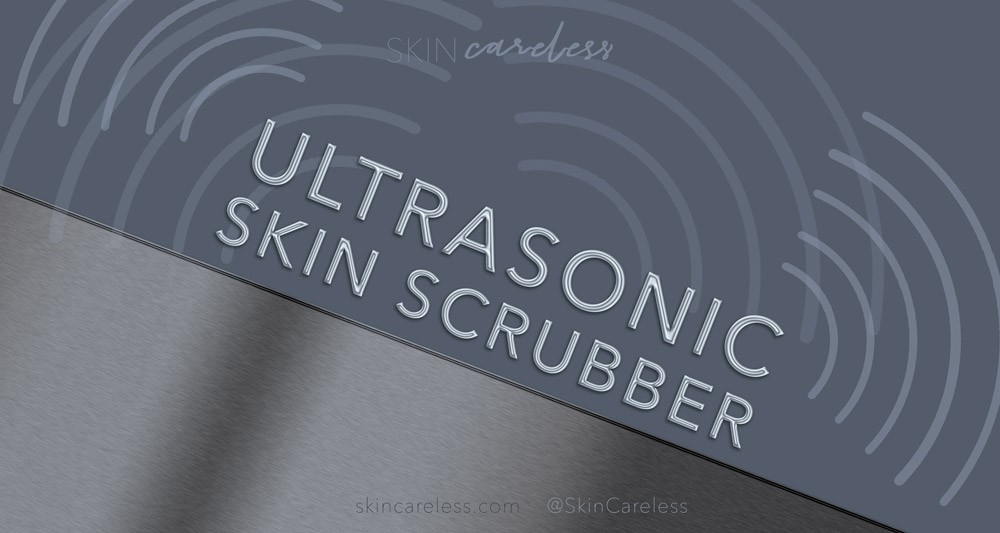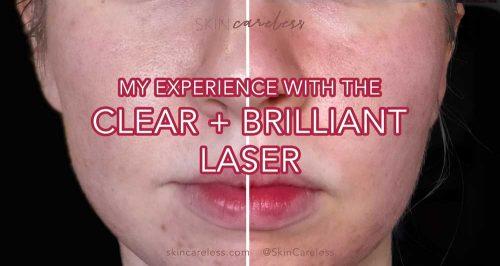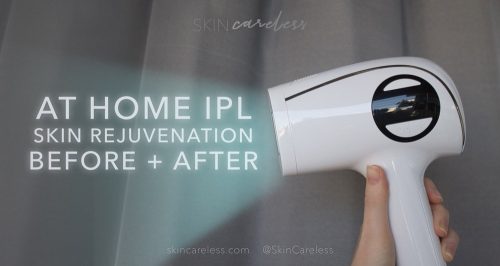Tell me I’m not the only one who’s noticed an influx of gratuitously close-up footage of ultrasonic skin scrubbers all over the faces of their Instagram explore page. An ultrasonic skin scrubber (or spatula) – if you didn’t know – is that metal thing that’s pushed across people’s faces and releases the oh-so satisfying “pore gunk”. And though it’s been around for a while, it’s rapidly becoming the latest trendy treatment.
Usually, I ignore most skin care advice I find out there on social media. But I had actually seen these tools being used at my skin clinic, so I was intrigued and looked into it further. What I found made me seriously consider buying one for myself.
Should you jump on the bandwagon and get scrubbing too? Let’s find out:
All about ultrasound
Ultrasonic skin scrubbers are devices that use ultrasound waves, a term you probably recognise from pregnancy scan fame.
Ultrasound refers to sound waves that are higher than human hearing can fathom. Usually that’s 20kHz or above. So to us humans, it is silent (but your dog might disagree).
Ultrasound is most often used by animals as a sort of echolocation, for detecting objects and distances and projecting these into visual stimuli. By sending out the waves and measuring how long it takes for them to bounce back, they can estimate how far away obstacles are.
A slightly lesser-known use for ultrasound is in physical therapy, for treatment of injured muscles and deep tissue. It works in this way by gently heating these structures and offering energy to create small vapor-filled bubbles which stimulate healing.
In the case of our ultrasonic skin treatment, the small metal device vibrates rapidly enough to generate these ultrasound waves across and into the surface of the skin.
What ultrasound does to the skin
Scrubber is a bit of a misnomer. There’s no scrubbing action, so the superficial skin scraping by the device isn’t really what’s at work. Instead it’s those ultrasound waves working below the surface.
Ultrasonic skin scrubbers work through the cavitation (the generation of rapidly expanding microscopic bubbles). That’s the same thing that heals deep tissue damage in physiotherapy, just this time in the pores.
The little shock waves of these bubbles forming and bursting pushes out the sebum inside your pores. If that sebum is impacted or dirty, the device might help to get it loose. You’ll see milky, oily liquid seeping up, especially from oilier areas of your face.
The skin benefits of ultrasound
This device is great for gentle exfoliation and deep cleaning. As part of a facial (like my at-home Hydrafacial routine), it’s perfect for prepping skin for actives, because it’ll be left super clean and clear. I can also see the potential for this device to prevent pre-comedones, by ensuring blockages aren’t left unnoticed for too long to oxidise and dry out.
It’s not magic, but it is a bit of a deeper clean that you’ll be able to get normally. And it’s a lot of fun to use!
Recommended ultrasonic skin devices
This is actually a fairly common treatment to find at medical spas, estheticians, and other facialists. Often, it’s not a standalone treatment but rather part of a larger facial. It’s used to deep clean the skin and exfoliate in preparation for a mask or massage.
But because of its simplicity and portability, ultrasonic devices are also a really good option for an at-home device to pick up. It’s pretty safe and difficult to do wrong.
There’s a ton of options out there at affordable prices.
How to use an ultrasonic skin scrubber
Start with skin that’s lubricated, preferably with water or a watery serum. With the curve of the device facing down onto the skin and the edge resting gently, turn it on and start to push slowly along the skin, like you’re trying to smooth out your muscles. Generally, work from inside to outside. If you push too hard, you’ll muffle the vibrations, so use a light hand. As the device gets dirty, wipe it off with a tissue.
When you’re finished, cleanse the skin thoroughly and continue with your routine as you like. Easy!





